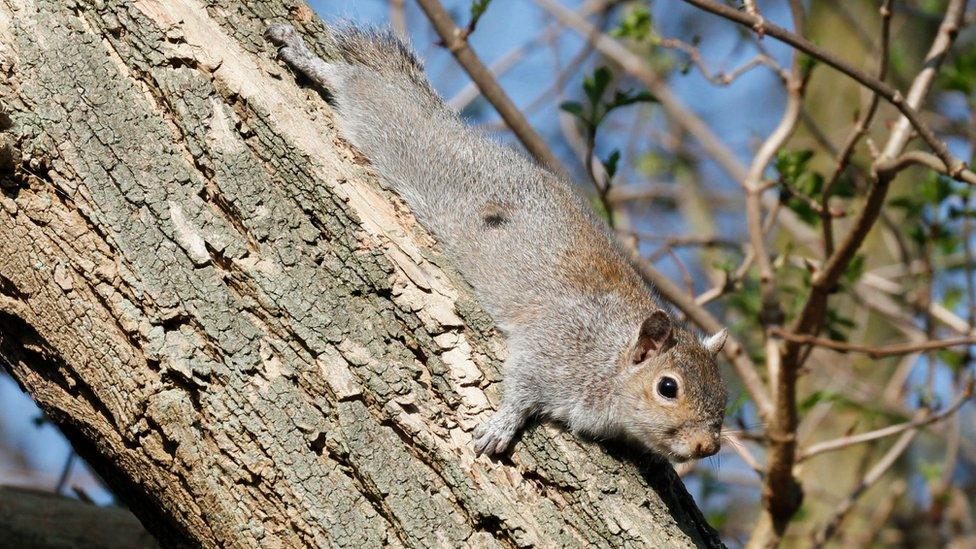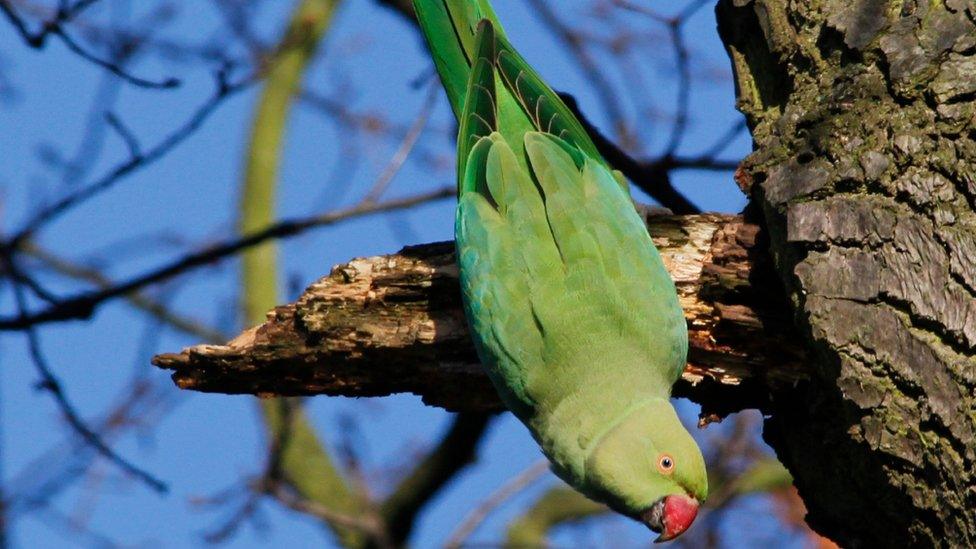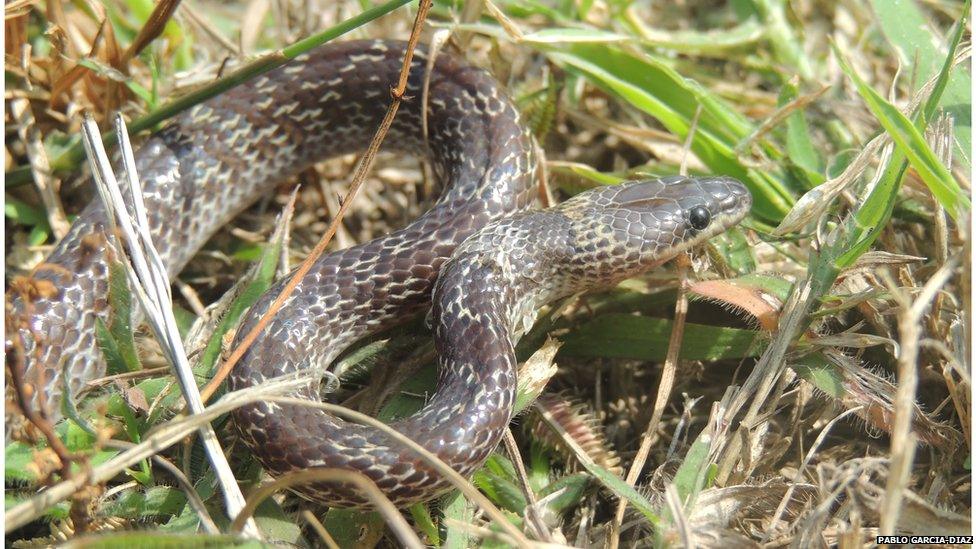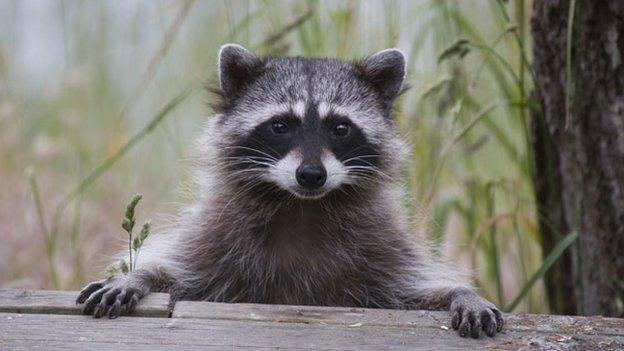Global hotspots for alien invasions revealed
- Published

The grey squirrel - originally from North America - is pushing out red squirrels
Great Britain is in the top 10% of areas for harbouring alien species, according to a study.
Animals that have moved in from afar include the grey squirrel, rose-ringed parakeet and the noble false widow spider.
The UK also has more established alien plants than elsewhere in Europe, such as Himalayan balsam.
Scientists say islands and mainland coastal regions are global "hotspots" for alien species.
They are calling for more effective measures to stop further introductions of plants and animals into vulnerable ecosystems.
"We need to be much better at trying to prevent the introduction of species that can be harmful in the first place," said Dr Wayne Dawson of Durham University, UK. "Prevention is better than cure with invasive species."
Alien species are plants or animals that are non-native (or alien) to an ecosystem and whose introduction is likely to cause harm.
International researchers studied data on eight groups of plants and animals across 186 island and 423 mainland regions.

The rose-ringed parakeet can compete with native birds for food and nest sites
They found:
Great Britain is 29th out of 540 regions (countries, states or island blocks) in terms of established alien species (of which a subset are invasive)
The top three global "hotspots" for alien species are the Hawaiian Islands, the North Island of New Zealand and Indonesia's Lesser Sunda Islands
Hawaii has high numbers of alien species in all eight groups studied, including fish such as guppies and mammals such as feral pigs
New Zealand is not far behind Hawaii, with about half of plant life being made up of non-native species. Many native birds have suffered from predation by mammals such as rats, cats and possums
Among coastal mainland regions, Florida in the US is the top hotspot, with invasive ants and reptiles such as the Burmese python

Wolf snake: Introduced to Christmas Island from South East Asia
Islands and mainland coastal regions are thought to have higher numbers of established alien plants and animals because they contain major points of entry such as ports.
These areas should be a focus for preventing further introductions of alien species, say scientists.
Measures include stepping up biosecurity measures at entry points to detect stowaway species and careful vetting of species proposed for introduction to an area.
The research is published in the journal, Nature Ecology & Evolution, external.
Follow Helen on Twitter, external.
- Published5 September 2013
